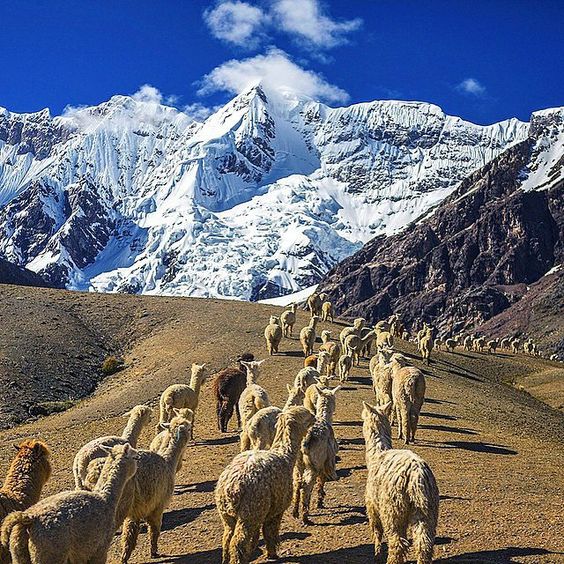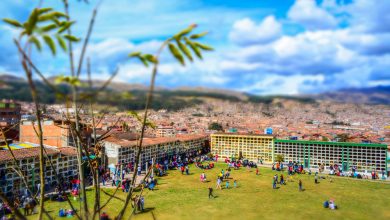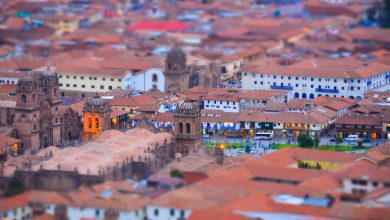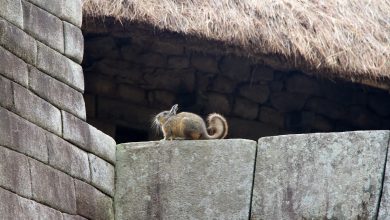Llamas and their importance in the Andean World

Llamas are domestic animals from the Camelidae family and are common in the Peruvian Andes. It was a very important animal in the cultures of the high Andes. In Inca times this animal was used for sacrifices in important ceremonies, such as Inti Raymi, the Feast of the Sun.
It was considered a sacred animal and was also used as a beast of burden. Llamas transported many products over long distances. Each llama could carry some 25 to 30 kilos. Generally, it was the male llamas that were used for porting goods and the weight would vary according to the size of the animals, their age, and the type of distance to be traveled. The geography of the Andes is highly varied with many high mountain passes and sinuous trails. It goes from the high plateau, the altiplano, to the Pacific coast.

Llamas live mostly in the high mountains at altitudes around 3,600 meters above sea level and higher. The feed on ichu, the wild grass and paco that grows on marshy land.
During the celebration of Inti Raymi they would sacrifice a black llama, whose color represented the earth, the Pachamama. This festivity lasted for three days during which the animal began to decay and Andean condors, drawn by the scent, would descend to eat its flesh. After they finished, they would take off and fly into the sky. This meant the condor was taking messages from this world to the spiritual world, the hanan pacha in the sky.
During the excavations of various archeological centers, such as Machu Picchu, Qenqo, and more, a good quantity of llama bones was found near the altars called, mesas de sacrificio, sacrificial tables, which shows that the llama was a sacred animal.

The llama was and continues to be important because of its wool and its flesh. From its wool people weave belts, called chumpis, carrying cloths, llicllas or qeperinas, clothing such as bayetas or Andean rustic cloth for pants, jackets, vests, caps, that is ch’ullos or huaccollos, etc. The llama’s femur is used in the process of weaving and is called a ruki when used this way. It tightens the weave so that in can become impermeable. At the same time the bones were used to make flutes, what we call quenas, as you can view in our museums.
The meat was used in two ways, as fresh meat and ass dried meat, chalona or jerky (a word from Quechua that made its way into English.) To make the dried meat they would make slices of fresh eat and would put them in salty water for approximately a week. Afterwards, they would dry the meat and expose it to the sun until it was completely dry. This meat could last for two or three years and was often transported great distances, such as to the gold and silver mines for the miners to eat.
Chalona was and is a very important product used in barter, or the exchange of products between communities. The population of the High Andean zones would carry chalona to exchange with populations at lower altitudes who grew corn, potatoes, quinoa, kiwicha, and more.
The llamas’ toes were used as rattles in celebrations They formed part of a range of instruments for the most important events. From their skin the Incas made tinyas, a kind of drum used in ceremonies in which they would select among the male, female, and young llamas.
Llama dung was used as fuel to make food and to make up adobes for houses. It also was a fertilizer for fields.
Today the llama continues to be an animal with great symbolic value and usefulness for all of us in the Peruvian Andes.




